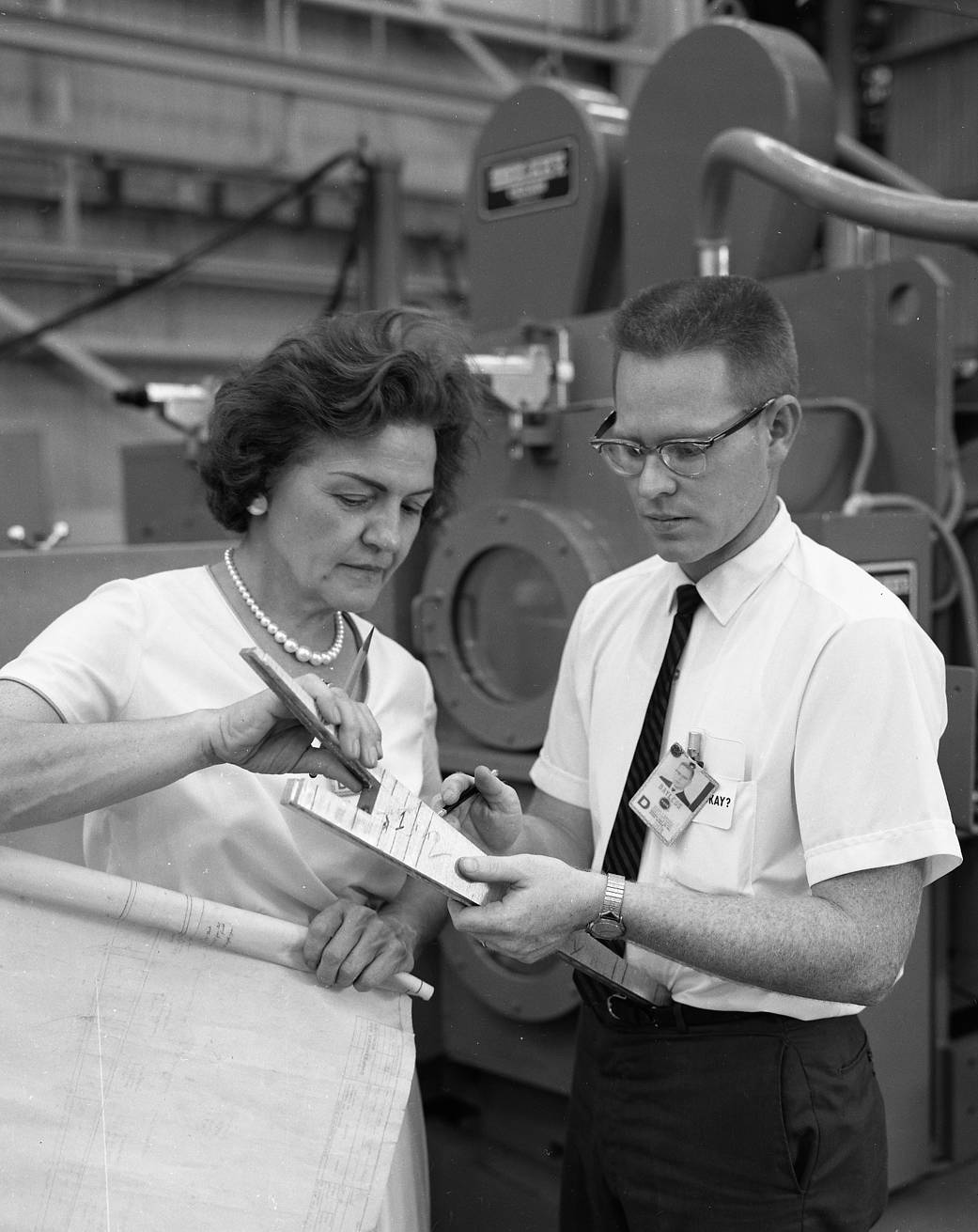
Margaret W. ‘Hap’ Brennecke was the first female welding engineer to work in the Materials and Processes Laboratory at NASA’s Marshall Space Flight Center. She was a trailblazer in the field of aluminum alloys – a skill critical to the success of the Apollo program. Brennecke spent her long career building large structures and breaking barriers in a male-dominated field.
She obtained a bachelor’s degree in chemistry from the Ohio State University in 1934, and spent 22 years as a research metallurgist with the Aluminum Company of America (Alcoa) Process Development Laboratory investigating new processes for using aluminum in large structures and developing new alloys.
During the World War II, Brennecke worked to determine alloys and joining methods for aircraft, railroad equipment, bridges, pontoons and landing craft like those used during the 1944 Normandy invasion. Along with many other women in the era, Brennecke seized upon the opportunities offered by the rapidly expanding wartime economy and a shrinking male labor force, which was fighting in Europe and the Pacific theaters. Discrimination on the basis of her gender followed Brennecke throughout her career. Brennecke noted that her nickname ‘Hap’ allowed her to disguise her gender in written reports and correspondence beyond the laboratory.
In 1961, Brennecke joined the Marshall Space Flight Center as a welding expert, bringing with her a vast knowledge of aluminum alloys and TIG (Tungsten Inert Gas) and MIG (Metal Inert Gas) welding processes. Throughout the Saturn era, Brennecke was called upon by center management to make critical decisions on the selection of lightweight high-strength metals and welding techniques for the huge Saturn stages. Specifically, Brennecke provided metallurgical engineering support for solving the problems of obtaining the required heat treatments, cold work, and metallographic structure leading to high strength and reliability in thick aluminum welds of cryogenic fuel tanks. She also contributed to the important research efforts leading to optimal thermal-aging treatments for those high-strength aluminum alloys.
In this image, Brennecke reviews blueprints with Ernest Bayless in the Manufacturing and Engineering Laboratory at Marshall Space Flight Center in October 1964.
#WomensHistoryMonth
Image Credit: NASA

























